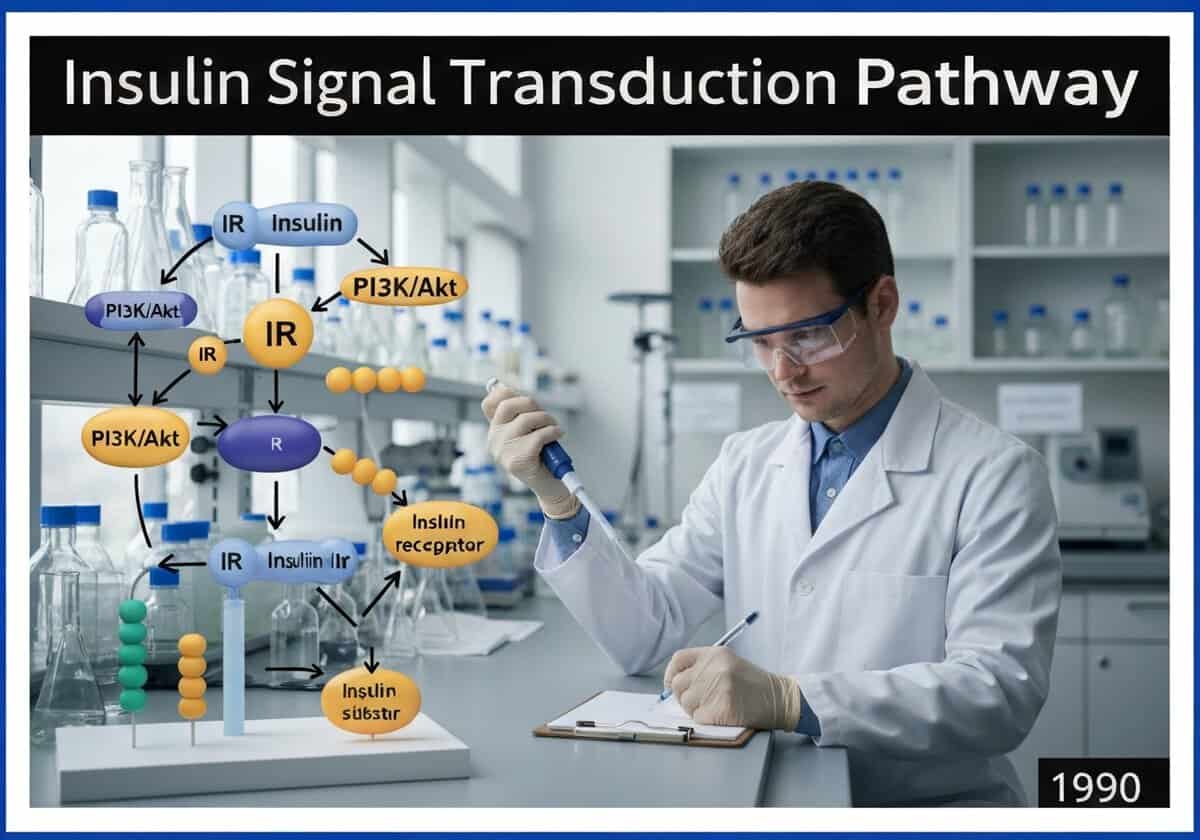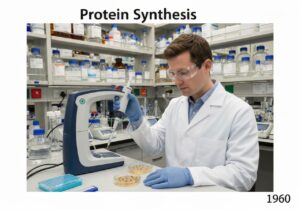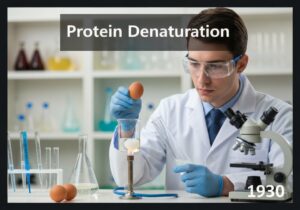Insulin initiates its effects by binding to the insulin receptor (IR), a receptor tyrosine kinase. This binding triggers autophosphorylation of the receptor, creating docking sites for insulin receptor substrate (IRS) proteins. Phosphorylated IRS proteins then activate downstream pathways, primarily the PI3K/Akt pathway, which mediates most of insulin’s metabolic effects, including the translocation of GLUT4 glucose transporters to the cell membrane.
The insulin signaling cascade is a complex and highly regulated network that controls cellular growth, survival, and metabolism. It begins when insulin binds to the extracellular alpha subunits of the insulin receptor (IR). This causes a conformational change, activating the tyrosine kinase domain located on the intracellular beta subunits. The activated kinase phosphorylates specific tyrosine residues on the opposing beta subunit, a process called autophosphorylation. These phosphotyrosine sites act as recruitment platforms for various adapter proteins, most notably the insulin receptor substrate (IRS) family (IRS1-4). Once docked, IRS proteins are themselves phosphorylated by the IR kinase. This creates binding sites for other signaling molecules containing SH2 domains, such as phosphatidylinositol 3-kinase (PI3K). The recruitment of PI3K to the plasma membrane is a critical step. Activated PI3K phosphorylates the lipid [latex]PIP_2[/latex] (phosphatidylinositol 4,5-bisphosphate) to generate [latex]PIP_3[/latex] (phosphatidylinositol 3,4,5-trisphosphate). [latex]PIP_3[/latex] acts as a second messenger, recruiting and activating other kinases, including PDK1 and Akt (also known as Protein Kinase B). Activated Akt is a central node in the pathway, phosphorylating a multitude of downstream targets to mediate insulin’s effects. A key action of Akt is to promote the translocation of vesicles containing the glucose transporter GLUT4 from the cell’s interior to the plasma membrane in muscle and adipose tissue. This insertion of GLUT4 allows for the rapid uptake of glucose from the bloodstream, lowering blood sugar levels. Akt also promotes glycogen synthesis, protein synthesis, and lipid synthesis, while inhibiting processes like gluconeogenesis and apoptosis.

















